Orion Nebula (Messier 42): stunning facts about the cradle of newborn stars
29th Nov 2023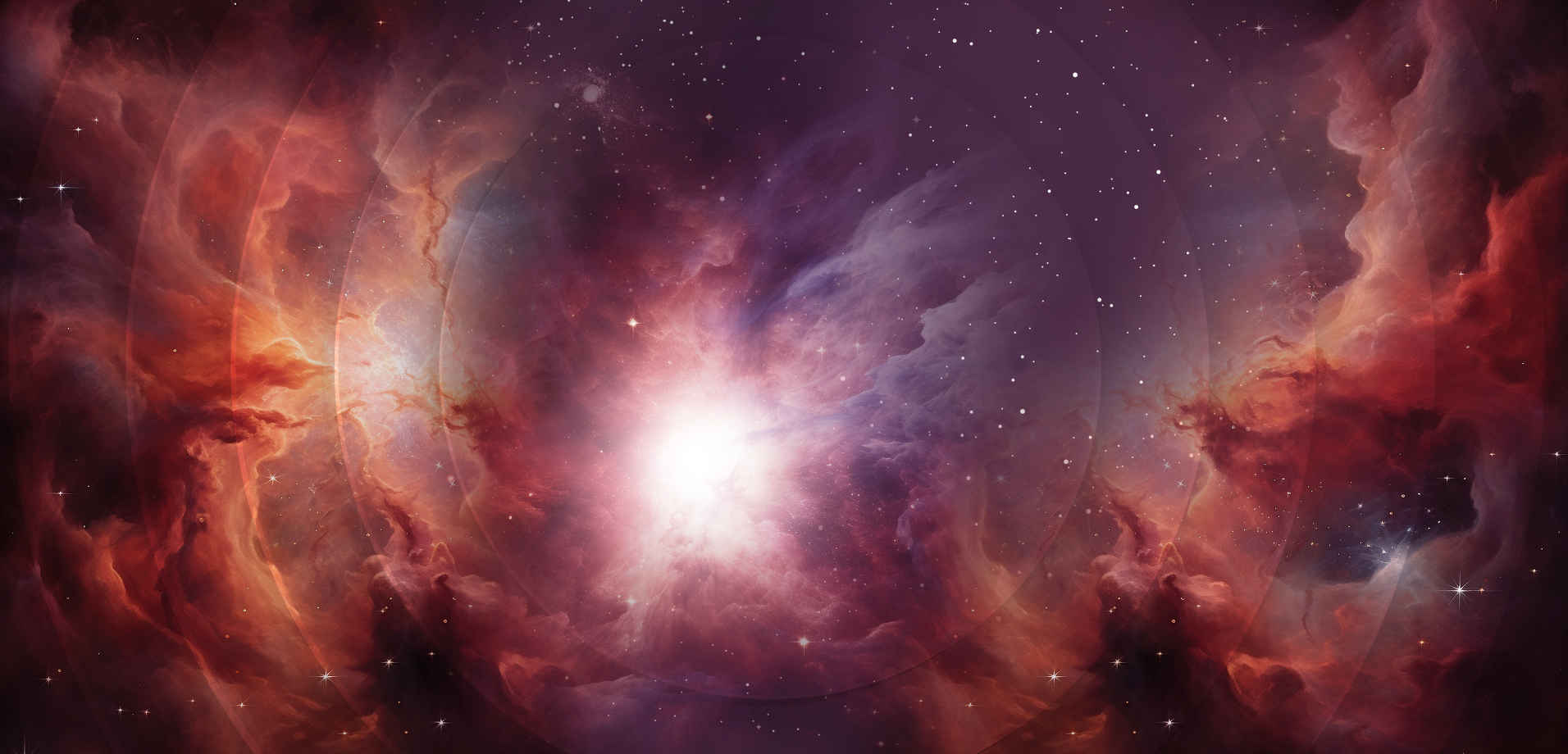
It is the closest cradle of newborn stars in our galaxy. Mesoamerican Mayans referred to it as the “fire of creation”. It can be easily spotted by the naked eye, and it is breathtaking. It is the Orion Nebula. What do we know about it?
Orion Nebula Quick Facts
- Location: the constellation Orion.
- Age: about 3 000 000 years.
- Year of discovery: 1610*
- Type: Emission/Reflection Nebula.
- Also known as Messier 42 and NGC1976.
- Distance from Earth: 1,300 light-years.
- Span: 25 light-years.
- Contains the Trapezium, which consists of four major stars that are positioned in the shape of a trapezoid.
- January is the best time for observation.
What is a Nebula and what type can it be?
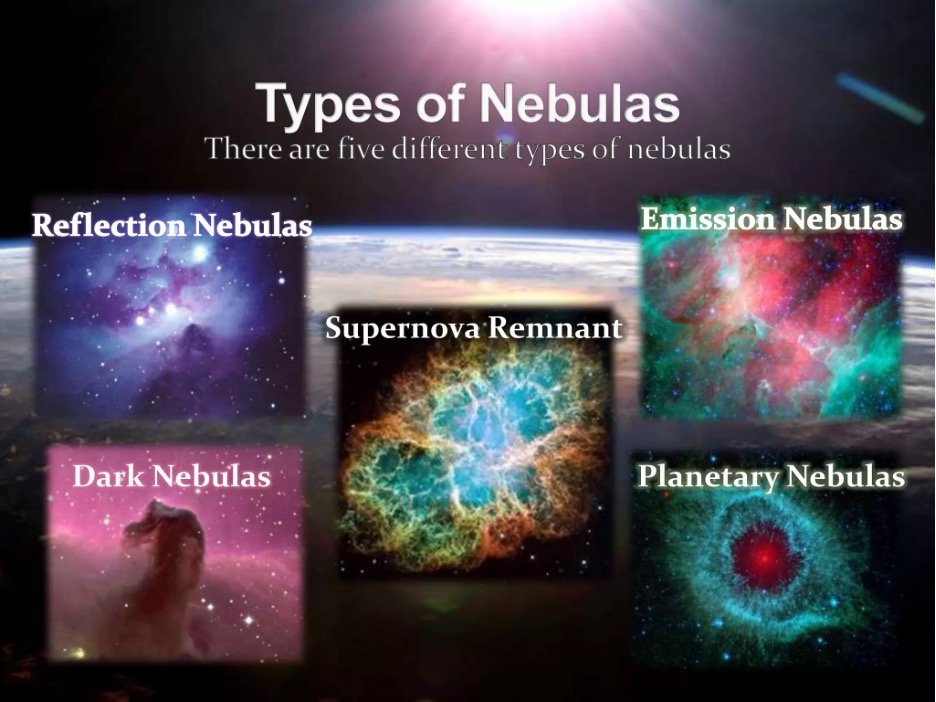
The Orion Nebula is one of the brightest objects in the night sky and one of the most studied. But before we learn everything about it, let’s find out what a nebula is and how it differs from other astronomical objects.
A nebula (from the Latin “fog, haze, cloud”) is a section of interstellar space in the form of a large (sometimes several million light-years in diameter) stationary, vague cloud consisting of plasma, hydrogen, helium, dust, and gases.
Until the mid-19th century, scientists considered any persistent, vague object in the sky, including galaxies and star clusters, to be a nebula. For this reason, the Andromeda Galaxy is still sometimes called the Andromeda Nebula. As astronomy and the resolving capacity of telescopes developed, the concept of “nebula” became more and more precise, but only Edwin Hubble managed to finally establish their true nature in the early 1920s.
Depending on what allows us to see the nebulae, they are divided into dark (non-diffuse) and light (diffuse). The first ones absorb visible light; they are opaque and stand out against the background of a bright sky; the second nebula type can be illuminated by the light of stars (reflective), and glow on their own due to the ionization of gas (emission, including planetary nebulae that arise during the evolution of stars) or result from flares from supernova explosions (supernova remnants). Quite often, diffuse nebulae simultaneously combine several radiation mechanisms.
What type of nebula is the Orion nebula?
The object combines two types of nebula: emissive and reflective. A nebula of the emission type has active star formation occurring in it. In the central region of Messier 42 nebula is a young star cluster known as the Trapezium, which includes several very hot and young stars. These stars emit intense ultraviolet radiation that ionizes the surrounding hydrogen gas, creating characteristic emission effects — the colour tints we can see in images of the nebula.

In turn, the Orion Nebula acquires a reflective effect due to the many dust particles that scatter and reflect light from nearby stars, mainly from the Trapezium cluster. So, we can see blue light scattered by dust in this area.
When and who discovered the Orion Nebula?
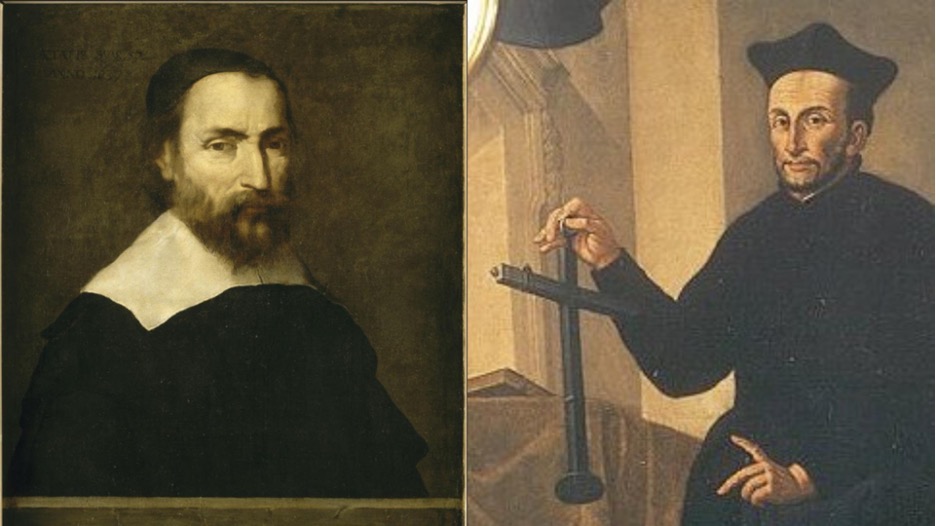
Orion nebula might have been known to the Mayan civilization, which lived from the 2nd century BC to the 16th century AD. Mayan myths have references to a “cloud of smoke” in the middle of an equilateral triangle formed from three bright stars of the constellation Orion – Rigel, Saif, Alnitak, where the nebula is actually located. But this is only a hypothesis.
The first recorded sighting of this nebula dates back to 1610. It was then when the French astronomer Nicolas-Claude Fabri de Peiresc, using Galileo’s newly invented telescope, noticed a diffuse nebula and recorded his observations. But he did not publish his discovery, so until 1916, the Swiss astronomer Johann Baptist Cysat, who discovered the nebula independently from Peiresc in 1611, was considered the discoverer.
In 1656, the Orion Nebula was described in detail by Christiaan Huygens, the founder of wave optics, who improved telescope design. In 1774, French astronomer Charles Messier included the nebula in his now famous catalogue of deep space objects, calling it Messier 42 or M42.
When was the Orion Nebula formed?
Messier 42 is a young nebula by astronomical standards. The average age of most of its stars is 300,000 years. However, there are long-lived ones, too. These are the four Theta Orionis stars (A, B, C, D) in the Trapezium Cluster. They are approximately two to three million years old. Older stars in the M42 have not yet been discovered. But there are such stars in the constellation Orion itself. For example, the age of the brightest star, the red giant Betelgeuse, is 8-10 million years, and the oldest star, 74 Orionis or k Orionis, is 2.3 billion years old.
Why is the Orion Nebula so special?
There are several good reasons why the Orion Nebula is considered to be unique and significant to astronomers.
The closest nebula to Earth
Messier 42 is relatively close to Earth, in the Orion constellation, at a distance of approximately 1,344 light-years or 400 parsecs. This proximity allows astronomers to study it in great detail, making it an excellent lab for studying star formation.
The cradle of newborn stars
M42 is an active source of new star formation. Today there are about 2,000 of them, including both already-formed stars and protostellar objects. The five largest stars in the Orion Nebula are located in the Trapezium Cluster within a sphere with a diameter of about 1.5 light years. They have a mass of about 15-30 solar masses and make the highest contribution to the illumination of the entire nebula.
Can you see the Orion Nebula with the naked eye?
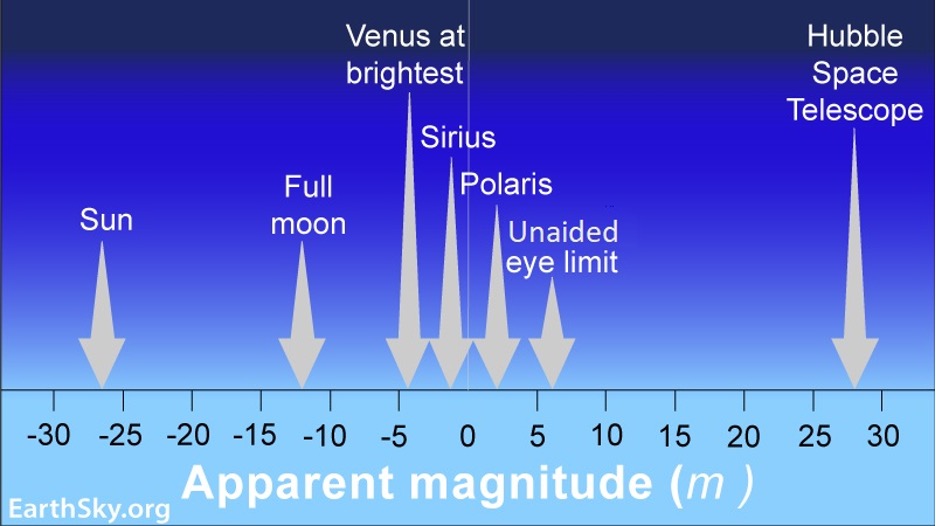
The Orion Nebula is the brightest and one of the most beautiful nebulas. Its magnitude is about 4m, making it not only visible to the naked eye but also the brightest diffuse nebula known. Its complex structure, intricate threads, and multi-coloured emissions are stunning and make the Orion Nebula a favourite subject of amateur and professional astrophotographers.
In 2022, the Hubble Space Telescope captured the first detailed images of the nebula, revealing its intricate features and improving our understanding of its structure.
Mythological connection
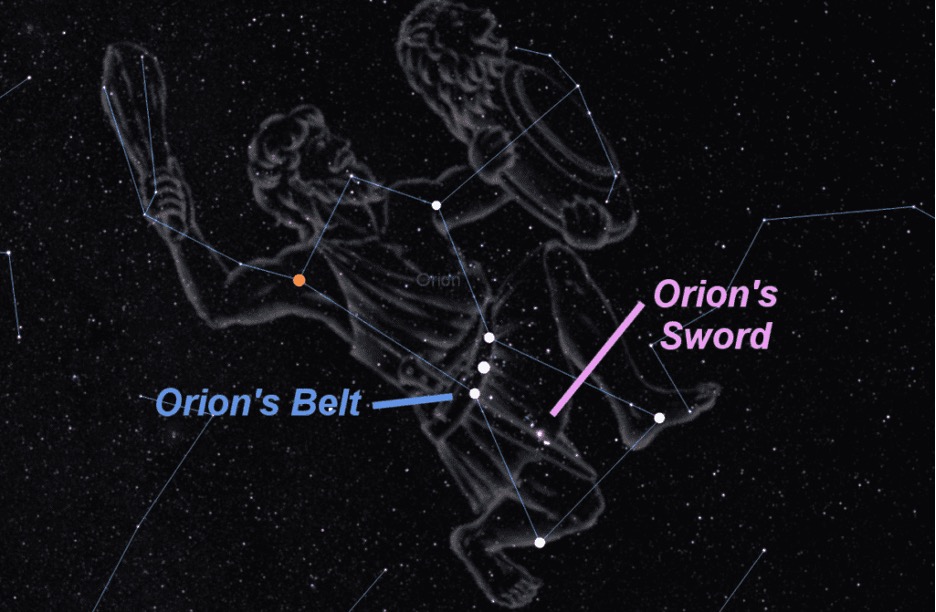
The nebula, like the constellation in which it is located, is named after the Boeotian giant hunter from ancient Greek mythology. According to one of the myths, the goddess of the dawn Eos fell in love with Orion, for which Artemis, at the behest of the angry gods, killed him with an arrow, and Zeus turned him into a constellation. According to another myth, Orion was turned into a constellation because, for several years, he pursued the Pleiades with his love.
Even the location of Messier 42 is very symbolic. It lies beneath the famous asterism, Orion’s Belt, next to the three stars (42 Orionis, Theta Orionis, and Iota Orionis) that form the Orion’s Sword asterism. For this reason, it is often called the Orion’s Sword scabbard.
Is heaven located behind the Orion Nebula?
M42 has not only mythological but also religious significance. Some believers, especially Adventists, have traditionally located heaven somewhere within the area of the Orion.
The first mention of the Orion Nebula as the abode of the Lord is found in the book of the prophet Amos, which is part of the Hebrew Bible (Tanakh) and the Old Testament. Chapter 5.8 tells us:
“Seek him that maketh the seven stars and Orion, and turneth the shadow of death into the morning, and maketh the day dark with night: that calleth for the waters of the sea, and poureth them out upon the face of the earth: The LORD is his name.”
In 1846, Adventist Church founder and preacher Joseph Bates described Messier 42 as a “gap” in the sky opening toward the throne of God in his pamphlet The Opening Heavens. Later, his colleague Ellen White, in her book Latter Day Events, chapter 19, “Christ’s Return,” would write:
“Dark, heavy clouds came up and clashed against each other. The atmosphere parted and rolled back. Then we could look up through the open space in Orion, whence came the voice of God.”
How to find the Orion Nebula in the sky?
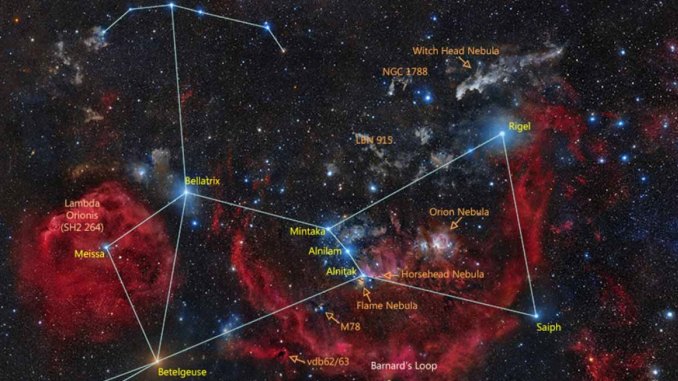
Look below the three stars of Orion’s Belt (or above if viewing from the southern hemisphere). You will see a faint line of stars, which make up Orion’s sword. It is halfway down the sword. For a faster and more convenient search, you can use one of the astronomy applications. We recommend SkyView Lite and Stellarium Mobile Sky Map.
What’s the best time to see Messier 42?
The best time to observe Orion nebula is around 10 p.m. in January, but there are no strict requirements. Orion can also be seen from November to March and even in summer, shortly before dawn. Orion visibility will be better if observed on a clear, moonless night, away from illuminated objects.
To the naked eye, M42 looks like a blur or a candle flame. When observing Orion with small telescopes or even binoculars, you can discern the shape and structure in more detail and also see the Trapezium. In large telescopes, with various filters, you can see many details and see the colour of the Orion Nebula.
Why is the Orion Nebula so colourful?
To the naked eye, it appears white, but under certain conditions, you can also see red, pink, blue, and green shades. Such a diverse palette is explained by the chemical processes occurring inside it. The predominant colour, reddish-pink, is due to the strong emission of hydrogen gas. When hydrogen atoms are ionized or excited by energy from the nearby young, hot stars, they emit light at specific wavelengths, mostly in the red part of the visible spectrum. In addition to hydrogen, the Orion Nebula contains traces of other elements, including oxygen. Ionized oxygen atoms can emit light in the green and blue parts of the spectrum. Finally, the dust that is also present in the nebula scatters and reflects the light of nearby stars, creating areas that appear bluish.
Photographing Orion nebula
Astrophotography allows us to capture astronomical objects in more detail compared to simply looking at them with the naked eye. Below are some tips to help you get amazing Orion M42 images:
- Use a DSLR or mirrorless camera with a telephoto lens or a wide-angle lens with a large aperture (such as f/2.8 or lower) to capture more light.
- Find a location with dark skies away from city lights to minimize light pollution, and mount your camera on a sturdy tripod. If you’re dealing with significant light pollution, it may be worth using a filter to reduce unwanted glare and increase contrast.
- Use manual settings. Set a wide aperture (low f-number), high ISO (e.g., ISO 800-1600), and slow shutter speed (e.g., 10-30 seconds) to get more detail. Experiment with exposure times to find the best balance between capturing detail and preventing star trails.
- Manually focus the lens to infinity. If you have a manual focus lens, you can use your camera’s live view mode to zoom in on the bright star and fine-tune the focus.
- Place the Messier 42 in the frame. Consider including foreground elements in your frame, such as trees or landscapes, to give your photo additional context and interest.
- Transfer the resulting images to your computer for post-processing. To do this, you can use programs such as Adobe Lightroom, Photoshop, or specialized astrophotography programs such as PixInsight and DeepSkyStacker.
And remember that astrophotography often requires practice and persistence, so don’t get discouraged if your first attempts aren’t very successful. Photographing the Orion Nebula can be the start of an exciting hobby that allows you to capture the unique beauty of space.
Sources:
- Messier 42 https://www.nasa.gov/feature/goddard/2017/messier-42-the-orion-nebula
- Steven Hawking, A Brief History of Time (Toronto: Bantam, 1988), 174.
- Amos, CHAPTER 5 https://bible.usccb.org/bible/amos/5
- https://spectrummagazine.org/article/sabbath-school/2009/05/25/heaven
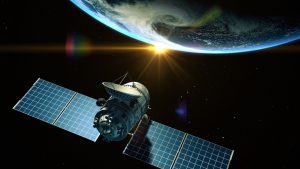

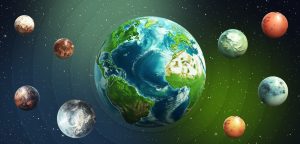



Thank you for your comment! It will be visible on the site after moderation.